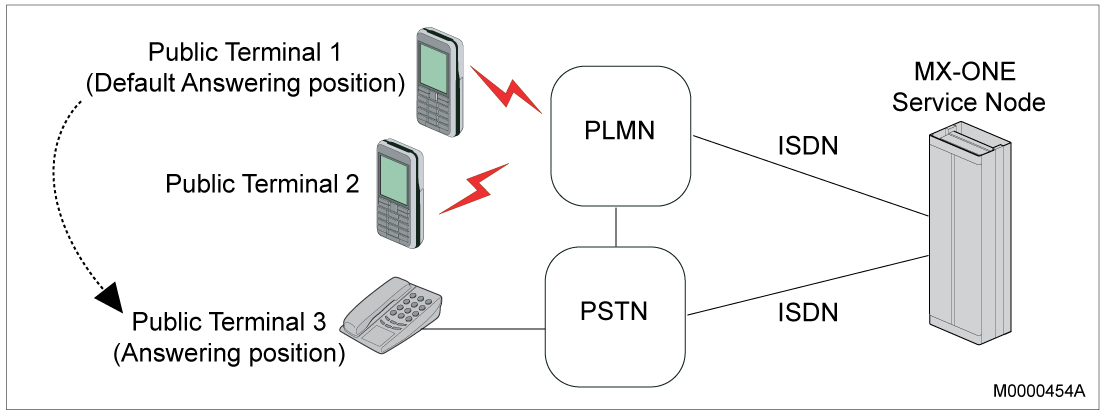Multiplicity
Additional public terminals can be associated within the MX-ONE Service Node with a remote extension. All these terminals share the same category profile. Only one of the public terminals associated with the same remote extension can make or receive calls at a time. This means that whenever one of the terminals is involved in a call, the rest of the terminals sharing the same directory number cannot make or receive calls through the PBX. User selected remote extension number is not affected by reload/restart
If there are a number of terminals associated with one MX-ONE Service Node remote extension directory number, the answering position can be changed through a procedure or CSTA request; that is, calls can be addressed to a terminal; that is different from the one stated as default public remote extension. In this way, the remote extension with multiple terminals associated with the same directory number can decide at any moment to set as answering position the terminal the user is placed where the user is situated. Selected, active, answering position is stored in semi-permanent data.
It is only possible to change the answering position if the public calling party number is received and if the remote extension associated with this public calling party number is a mobile extension. So, this facility is available if the R1/R3 access number is used.
The procedure * FC # (where FC is the Function Code for the application system) is used for the modification of an active answering position for multiple remote extensions. This procedure can be requested from the public terminal which is intended to become the new answering position.
The procedure # FC # is used for the setting of the default answering position for remote extensions with multiple terminals (the default one becomes active). This procedure could be entered from any of the associated public terminals.
